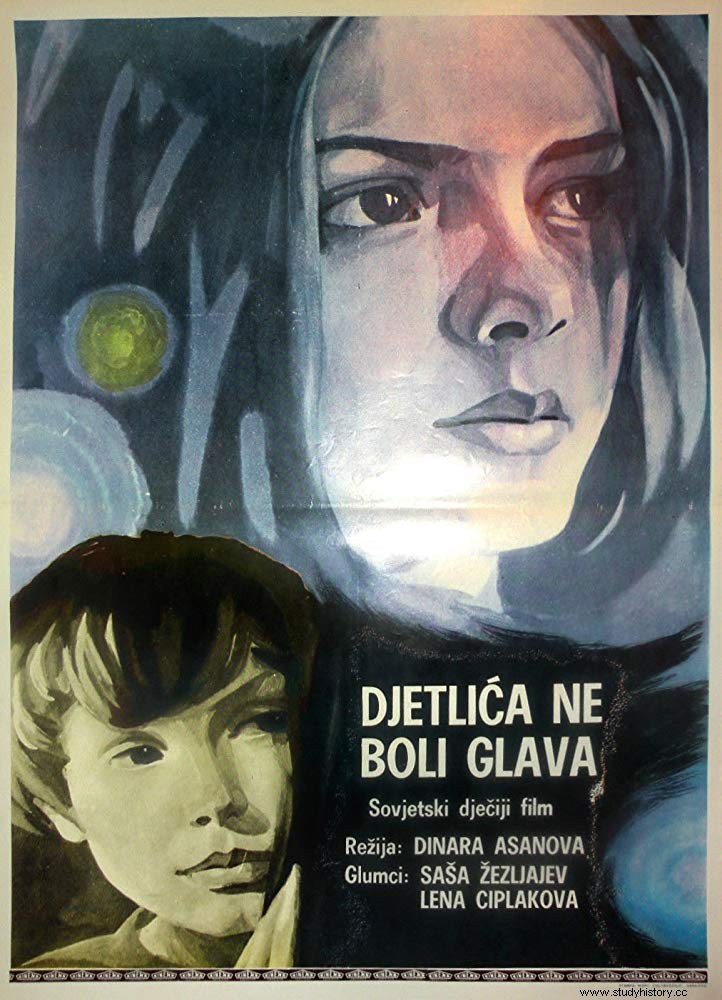Soviet director of Kyrgyz origin, Dinara Kuldashevna Assanova (1942 – 1985) is known in particular for her works on youth and adolescence, and for her films The Woodpecker does not have a headache and The Rascals.
Early filmmaker

Dinara Kuldashevna Assanova (Динара Кулдашевна Асанова) was born on October 24, 1942 in Frunze (now Bishkek) in the Kyrgyz Soviet Socialist Republic (or Kyrgyzstan), then in the USSR and which in 1991 became Kyrgyzstan. She has a sister, named Klara. Upon leaving school in 1959, while her parents hoped to see her head towards a career in teaching, Dinara saw things differently:she dreamed of cinema.
When she was only seventeen, Dinara began her film career by being hired by the film production company Kyrgyzfilm, which was then called "Frounze News and Documentary Film Studio". ". She worked there as a props maker, editor, actress, until becoming an assistant director for the film Une fille de Tien Shan (1960) by Algimantas Vidugiris. She also assists Soviet director Larissa Chepitko on her feature Scorching Heat .
Roudolfo
Thanks to her professional experiences, Dinara Assanova was admitted to the National Institute of Cinematography S. A. Guerassimov (or VGIK), a school dedicated to the arts of the screen and founded in Moscow in 1919. Living with difficulty the fact of not having joined the establishment by passing the competition like her comrades, Dinara is very unobtrusive during her studies. She belongs to the same promotion as Mikhail Romm and Aleksandr Stolper, two well-known Soviet filmmakers.
For her graduation project, Dinara made the short film Roudolfio in 1969. Adapted from a novel by Russian writer Valentin Rasputin, his work tells the story of a teenage girl falling in love with an older married man. Addressing questions around sexuality, adolescence, the age of consent, this first short film already takes her out of the political correctness of the time. After analysis of the work by the censor, scenes will be cut. After graduating the same year, Dinara had five difficult years; his film proposals are systematically rejected by the State Committee for Cinematography.
In 1971, Dinara Assanavo married Nikolaï Vladimirovitch Youdine, painter. They will have a son, Vladimir, the same year. Vladimir will frequently accompany his mother during her filming and will appear in several of her films.
The Rascals
Dinara Assanova's crossing of the desert ended when she joined the Lenfilm studio in Leningrad (now Saint Petersburg) in 1974. The following year, she made her first feature film, Le Pivert n'a no headache, a film which received a favorable reception from the public and which earned it recognition in the world of Soviet cinema. Telling the story of a young aspiring musician who falls in love with a girl while on summer vacation, Le Pivert n’a pas ce a ce ca addresses issues that will be the hallmark of Dinara's work:adolescence, the difficulties of youth, the troubles of first love, the transition to adulthood.
Dinara made eight other films at the Lenfilm studio, up to 1985, realistic works describing daily life and sometimes subtly criticizing life in the Soviet Union. Among his most notable films, Les Garnements , made in 1983, depicts the story of a college student who befriends a group of delinquent young boys from underprivileged backgrounds. The feature film, his greatest commercial success, earned him a USSR State Prize.
In April 1985, Dinara Assanova was found dead in her hotel room in Murmansk, where she had gone for the shooting of her film An Unknown. The 42-year-old apparently succumbed to cardiac arrest, although a note resembling a goodbye letter was found on her table. Three documentaries will be made on his life and work; in 2018, his film My sweet, my darling, my beloved, my unique (1984) is presented in the Un certain regard section of the Cannes Film Festival
